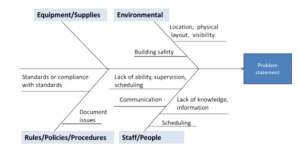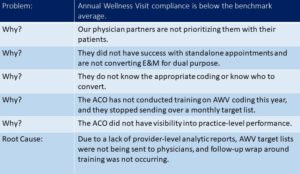The Guide to Population Health series consists of a three-pronged approach: technology, strategy, and people. Today’s discussion focuses on the strategic component behind large-scale initiatives. Most organizations will find that they have more than enough data to begin making a meaningful impact on patient outcomes. Typically, they have access to multiple data sources, interfaces, and some sort of Enterprise Data Warehouse (EDW). Access to millions of data points necessitates that an organization has a clear strategy on how to collect, interpret, and act on data to make lasting changes across a patient population.
Many organizations believe that technology enablement and interfacing will pose the most significant challenge to success. In Lightbeam’s experience, devising initiatives with value-based care (VBC) organization administrators takes time and communication up front to ensure success in the implementation process. An organization must be clear in its mission, goals, and expectations of the provider community to prevent miscommunication, disorder, and frustration that leads to low adoption. Value-based care strategy primarily comes back to several key questions:
- Where is the organization performing poorly in cost, utilization, or process control compared to others in their market or geographical region?
- What unique challenges does the organization have with their provider mix, compensation, or patient profile that has historically limited their ability to enact change?
- Does the organization have a clear framework on how to identify opportunities and prioritize actions?
- What is the organization’s communication plan and feedback loop to the provider community to receive early buy-in and adoption?
- How are members of the organization going to measure and communicate success?
After these initial questions, the objective becomes driving the root cause analysis to sculpt and narrow organizational goals. Lightbeam’s Operations team employs several tools to find the root cause, working alongside the clients with the data to back any final decisions.
Helpful Tools to Drive Root Cause Analysis
The Driver Diagram
The Centers for Medicare & Medicaid (CMS) outline a process called constructing a driver diagram. The driver diagram consists of the organizational objective(s), the primary and secondary drivers to accomplish the initiatives, the actions that need to occur for the organization to perform, and the metrics to monitor effectiveness and track progress. Lightbeam uses this CMS process in Operations to promote cohesion and alignment of goals for both clients and internal team members.

Figure 1. Original example based on models from CMS.
Fishbone Diagram
Fishbone diagrams offer compelling visuals in the early stages of an initiative. The diagrams are designed to illustrate cause and effect with different possible plans of action and identify underlying factors that may result in poor outcomes. The fishbone diagram is something Lightbeam employs if Operations team members are undecided on strategies based on discussions and meetings with clients. By evaluating the anticipated results of different approaches, it promotes proactivity and preparedness for what may go wrong.

Figure 2. Centers for Medicare & Medicaid. How to Use the Fishbone Tool for Root Cause Analysis https://www.cms.gov/medicare/provider-enrollment-and-certification/qapi/downloads/fishbonerevised.pdf.
The Five Whys
The Five Whys is another tool from CMS to determine the root cause of an organization’s high utilization. The methodology is simple: start with the event or problem that occurred or is actively occurring in a patient population, and begin the deduction process of asking why. There will then be a series of possible responses. To know if the issue at hand is the root cause or a side effect, ask if the response was resolved, would it eliminate the event or problem.

Figure 3. Original example based on models from CMS
Each of these tools will help an organization better understand the root cause and give them the tools to prioritize initiatives throughout the year. Lightbeam works with a wide range of clients, and one thing that each tends to have in common is resource constraint. To make the most informed decisions, it is essential to take the time and ask the right questions, give the organization the space to have discussions on the operational lift, and then begin the prioritization process.
The last installation of the series will cover arguably the most important part of this blog trio: the people that operate the technology and create the strategies to improve the lives of patients and providers. In the meantime, visit the Lightbeam Education Center to read other blog posts on The Beacon, watch webinars, and download case studies on client success.

Josh Patten is the VP of Operations at Lightbeam.
